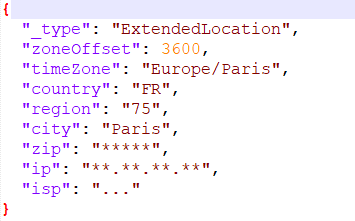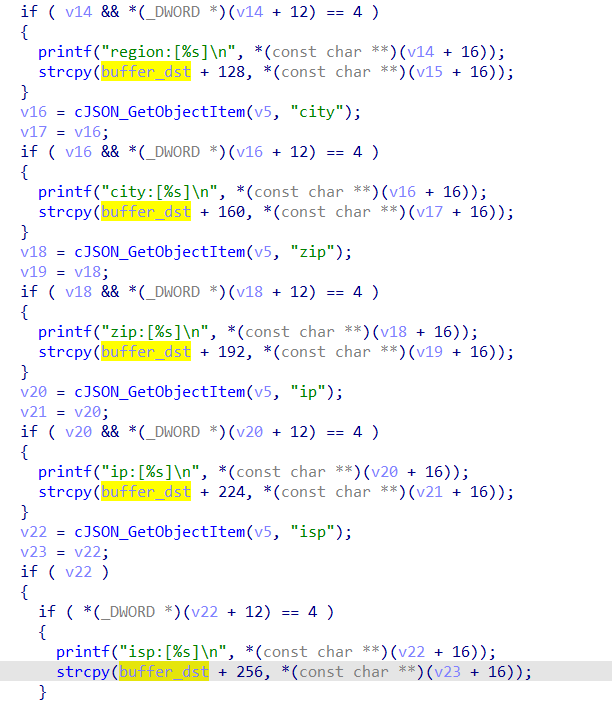Netgear Nighthawk r7000p aws_json Unauthenticated Double Stack Overflow Vulnerability
- Product links: https://www.netgear.com/support/product/r7000p.aspx
- Version: < 1.3.3.154
- Author: Jean-Jamil Khalife
Vulnerable models
Nighthawk WiFi Mesh Systems
- MR60 fixed in firmware version 1.1.7.132
- MS60 fixed in firmware version 1.1.7.132
- R6900P fixed in firmware version 1.3.3.154
- R7000P fixed in firmware version 1.3.3.154
- R7960P fixed in firmware version 1.4.4.94
- R8000P fixed in firmware version 1.4.4.94
Disclosure Timeline
- 2022-07-22 Netgear contacted
- 2022-11-01 Fix integrated
Introduction
Pre-auth remote code execution vulnerability found in the Netgear Nighthawk r7000p on the WAN interface.
Nighthawk R7000P is a popular dual-bank WiFi router advertised with gaming-focused features, smart parental controls, and internal hardware that is sufficiently powerful to accommodate the needs of home power users.
The vulnerability resides in the /tmp/media/nand/router-analytics/aws_json binary, running on the Netgear router.
Due to increasing demand, we do vulnerability research on connected objects (router, camera, printer, etc.). One of the missions entrusted to us by our client was to find vulnerabilities on a selection of embedded devices, including the aforementioned Netgear Nightawk router. Several vulnerabilities have been discovered and will be published on the blog.
Vulnerability
This vulnerability can be remotely exploited by an attacker on the WAN side of the router, without authentication. The aws_json daemon fetches json data from a webserver and a buffer overflow can be triggered when parsing this content.
By placing a malicious json content in a webserver and redirecting the router to download it (either by DNS redirection or TCP redirection), an attacker can execute arbitrary code. As aws_json runs under the root user, the attacker gains full privileges on the router.
aws_json is a program that connects to the domain devicelocation.ngxcld.com when the router starts. It sends an HTTP GET request at the address https://devicelocation.ngxcld.com/device-location/resolve to fetch information about the device location.

The server reponse is a json content that specifies information like city, country, etc.

We noticed that the curl request is sent using the HTTPS protocol. However, the -k option given to curl explicitly prevents certificate signature and CommonName veritication. In other words, it means that anybody can impersonate the remote server. The json content will be written to file /tmp/xCloud_MAXmind which is then parsed by aws_json.
Here is the function body that parses the file:

However, the strcpy() function does not check the size of each field. It’s possible to write a large enough content leading to a stack buffer overflow.
Exploitation
Overwriting function pointer
We noted the binary is not ASLR compiled and the executable addresses are in the range 0x00008000 and 0x00027000. All other mapped modules run with randomized base addresses.
00008000-00027000 r-xp 00000000 1f:11 315 /tmp/media/nand/router-analytics/aws_json
So, we needed to overwrite the PC register with an address in the binary, but also needed to put a null char at the end. This was made possible thanks to the strcpy() function.

Finding gadget
By exploring all gadgets pointing to the system() function, we can see at offset 0x00014E20:

SP points to contents that are not immediately controllable because it is located just after the return address. It is not possible to write there because strcpy() stops at the null byte. However, the vulnerability can be triggered twice, thanks to the multiple strcpy() calls. We can trigger in this order:

So, with these two overflows, we can call system() and execute our payload written on the stack.

To perform this attack, We configured a Raspberry Pi 4 as follows:
To summarize, we need to:
Recommendations
In general, it is important to force verification of HTTPS certificates by removing any -k (or --insecure) option from curl. Otherwise, it will be possible to intercept and modify on the fly via MiTM the packets that pass through, which can lead to the compromise of the router.
Also, it is necessary to replace strcpy() with safer functions -- such as strncpy() -- to control the size of the processed data in order to avoid memory safety problems. Use appropriate compiler options (like -Wformat-overflow=2, -Wformat-security, -Wfortify-source, -Wformat=2, ...) to detect these issues preemptively.
Conclusion
This vulnerability research was requested by one of our customers who wanted to know if it was possible to compromise the company's routers.
The vulnerability we found made it possible to obtain a shell on the router which could subsequently lead to access to third-party subnets.
Netgear is a major player in network devices for home and small/medium companies which makes their product a valuable target for hacker.
Note that other Netgear products were affected by the same vulnerability.